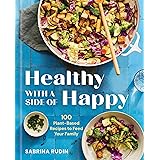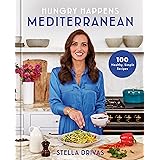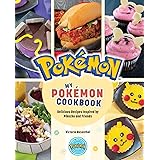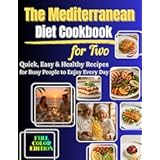Achieving significant fat loss does not necessitate an exorbitant grocery budget or complex culinary skills. In fact, comprehensive meal plans can be implemented for approximately $5 per day, demonstrating that effective weight management is accessible. As observed in a recent seven-day trial, individuals following such a plan have successfully reduced body weight by nearly two pounds, highlighting the plan’s efficacy. This strategic approach to nutrition emphasizes budget-friendly ingredients and simple preparation methods, making it an ideal solution for those committed to a healthy lifestyle without financial strain.
The foundation of a successful, economical fat loss regimen is rooted in informed choices regarding both ingredient selection and purchasing location. This blog post will delve into the practicalities of developing a cheapest fat loss meal plan, offering detailed insights that extend beyond the video’s scope. Information regarding optimal grocery shopping, cost-effective ingredient sourcing, and simple meal preparation techniques will be provided. Furthermore, guidance on customizing nutritional intake for individual needs and maintaining dietary variety will be discussed, ensuring sustained adherence and long-term success.
Unlocking Affordable Nutrition: The Cheapest Fat Loss Meal Plan
The premise of this economical meal plan revolves around maximizing nutritional value while minimizing expenditure. A well-structured approach can yield a daily intake of around 2,000 calories and over 150 grams of protein, a suitable baseline for many embarking on a fat loss journey. This calorie and protein target is often optimal for initiating fat loss for a majority of individuals. However, the plan’s inherent flexibility allows for precise adjustments based on specific body weight and gender requirements, which is a crucial aspect of personalized nutrition.
Strategic Grocery Shopping: Maximizing Your Budget
The initial step in creating a budget-friendly fat loss meal plan involves smart grocery shopping. Identifying the most economical retailers can significantly reduce overall costs. For instance, a comparative analysis of a sample healthy food cart across five popular grocery chains revealed substantial price differences. Whole Foods was identified as the most expensive option, a finding that is largely consistent with consumer perceptions regarding premium grocery experiences. Trader Joe’s offered a reduction of approximately $20 for the identical cart, positioning it as a more accessible choice for many shoppers.
Further down the list, Kroger and Walmart presented increasingly cost-effective alternatives. However, Aldi emerged as the undisputed leader in affordability, offering the same basket of goods at less than half the price of Whole Foods. This considerable price disparity underscores the importance of choosing grocery stores known for their aggressive pricing strategies. Consequently, prioritizing stores such as Aldi or Walmart for staple purchases is highly recommended when adhering to a strict budget for healthy eating.
Selecting Cost-Effective Ingredients for Fat Loss
Once the optimal shopping location has been determined, attention must be turned to the selection of affordable yet nutritious ingredients. Extensive research indicates that certain protein, carbohydrate, and fat sources consistently provide superior value. These cost-effective options form the backbone of a sustainable fat loss diet. For instance, lean protein sources such as chicken breast, eggs, and canned tuna are often more budget-friendly than salmon or premium cuts of beef, while still offering robust protein content.
In terms of carbohydrates, oats and rice are highly versatile and inexpensive. These staple grains provide sustained energy and are easily incorporated into various meals. Furthermore, healthy fat sources like peanut butter offer significant caloric density and flavor for a reasonable cost. By focusing on these economically viable options, individuals can construct a diverse and satisfying cheapest fat loss meal plan without compromising on nutritional quality or taste, ensuring consistent progress towards their weight loss goals.
Meal-by-Meal Breakdown: Delicious & Budget-Friendly Recipes
The practical application of this budget-conscious philosophy is demonstrated through four core recipes designed for ease of preparation and deliciousness. Each meal contributes to the overall daily protein and calorie targets, ensuring satiety and supporting muscle preservation during fat loss. These recipes are not only simple to make but also offer flexibility for customization, preventing dietary monotony, which is a common challenge in long-term meal planning.
Nourishing Mornings: Overnight Oats for Breakfast
Overnight oats are frequently consumed as a convenient and nutritious breakfast option, particularly by those with active lifestyles. All ingredients required for this meal are typically budget-friendly, making it an excellent starting point for a cheapest fat loss meal plan. The preparation process is remarkably quick, requiring less than five minutes of active time, and the meal can be assembled the night before for refrigeration, offering unparalleled convenience on busy mornings. This allows for efficient meal prepping and eliminates morning rush stress.
The standard recipe involves combining oats, 0% plain fat-free Greek yogurt, and protein powder in a container. After mixing with water, the concoction is refrigerated overnight. In the morning, it is often topped with a banana, a tablespoon of peanut butter, and a pinch of salt. For individuals desiring an elevated experience, optional additions such as sugar-free syrup or honey may be considered, provided they align with budgetary allowances. This flexibility ensures the meal remains appealing over time, promoting adherence.
The True Cost of Protein Powder: A Deeper Look
Despite common perceptions regarding its cost, protein powder can be a highly economical source of protein when purchased in bulk. When the cost per gram of protein is calculated, it frequently proves to be more affordable than premium animal proteins such as salmon and ground beef. Furthermore, protein powder’s cost-effectiveness often rivals that of Greek yogurt, eggs, milk, and canned tuna. This makes it an invaluable component of a budget-conscious diet, especially when aiming for higher protein targets.
Beyond its economic benefits, protein powder offers distinct advantages in terms of convenience and macronutrient profile. Its rapid preparation requires minimal effort, and it provides a concentrated source of protein without the additional fats and calories often found in other protein-rich foods. This efficient delivery of protein is particularly beneficial for individuals managing their caloric intake for fat loss, making it a strategic inclusion in many meal plans. Utilizing protein powder can also assist in flavoring meals and creating satisfying textures.
Convenient & Flavorful Lunches: Freezer Burritos
The challenge of meal prep longevity is effectively addressed with freezer burritos, a highly practical solution for healthy lunches. These burritos can be stored for several months without compromising quality, making them an excellent choice for batch cooking. The deliciousness of these burritos is maintained even after prolonged freezing, which is a notable advantage over many other prepped meals that quickly lose their appeal. Their long shelf life contributes significantly to the sustainability of a cheapest fat loss meal plan.
For preparation, a large white flour tortilla is generally recommended due to its lower cost and superior pliability compared to whole grain varieties, which prevents breakage during rolling. Essential seasonings such as salt, garlic powder, pepper, and soy sauce are critical for flavor enhancement and are assumed to be basic pantry staples. Cooking spray is also utilized to minimize added calories from oil during the cooking process. Chicken and pinto beans are cooked together, followed by diced onions and peppers in the same pan, all seasoned appropriately. After cooling, the mixture is evenly divided among tortillas, topped with cheddar cheese, and then expertly wrapped and frozen.
Smart Snacking: Bridging the Gap Between Meals
The period between lunch and dinner often presents a significant challenge for adherence to a fat loss plan, as cravings can lead to impulsive, unhealthy snacking. Incorporating a simple, healthy snack such as an apple can effectively mitigate this risk. An average apple costs approximately 77 cents and contains about 80 calories, making it a highly economical and low-calorie option. This small investment can yield substantial returns in terms of dietary compliance and overall fat loss progress. The fiber content in apples also contributes to satiety.
The strategic inclusion of such snacks helps manage hunger, preventing overeating at subsequent meals. Apples are not only budget-friendly but also portable and convenient, requiring no special preparation. Their natural sweetness can satisfy mild cravings without derailing dietary goals. Therefore, integrating a daily apple into the cheapest fat loss meal plan is a simple yet effective strategy for maintaining consistent progress and preventing common dietary pitfalls, reinforcing disciplined eating habits.
Satisfying Dinners: Healthy Fried Rice
Fried rice, a culinary staple in many households, is adapted here into a delicious and easy-to-make dinner suitable for fat loss. This recipe begins with scrambling three whole eggs, which are then set aside. Diced carrots, green peas, and garlic are cooked until soft. Green peas are particularly advantageous for fat loss diets because they contain nearly half the calories of an equivalent volume of rice. This allows for a greater volume of food for fewer calories, contributing to increased satiety without excessive caloric intake.
Once the vegetables are prepared, white rice is added to the pan. For optimal texture and to prevent clumping, day-old leftover rice from the refrigerator is highly recommended. Instant rice also serves as a convenient alternative. Soy sauce is added to taste, and the scrambled eggs are stirred in to complete the dish. For an enhanced experience, premium additions such as sriracha, chili garlic, or a side of steamed broccoli can be incorporated to boost flavor and vegetable intake, demonstrating the plan’s adaptability.
Sweet Endings: A Budget-Friendly Protein Smoothie Dessert
Late-night sweet cravings frequently undermine dietary progress, even after a day of disciplined eating. To address this common challenge, a budget-friendly protein smoothie is incorporated as a healthy dessert option. This recipe is exceptionally simple to prepare yet delivers a satisfyingly delicious outcome. It offers a guilt-free way to satisfy a sweet tooth, thus supporting long-term adherence to a cheapest fat loss meal plan. The smoothie provides essential protein and curbs desires for less healthy alternatives.
The recipe typically involves blending a frozen banana, one scoop of chocolate protein powder, one tablespoon of peanut butter, three-quarters of a cup of water, and 5-10 ice cubes for desired thickness. In instances where protein powder is not preferred, a serving of Greek yogurt can be substituted, though a sugar-free sweetener like Stevia may be needed to achieve adequate sweetness. For those seeking a truly premium experience, specialized appliances such as a Ninja Creami can transform this smoothie into an ice cream-like consistency, offering a decadent yet healthy treat.
Optimizing Your Plan: Customizing for Personal Fat Loss
While the baseline meal plan provides an excellent starting point, individual nutritional needs necessitate customization for optimal fat loss. Factors such as current body weight, activity level, and gender significantly influence caloric and macronutrient requirements. Therefore, adjusting the plan to align with these personal metrics is a critical step towards achieving efficient and sustainable weight reduction. This personalization prevents stalls in progress and ensures the diet remains effective over time.
Adjusting Calories and Protein for Individual Needs
The initial meal plan provides approximately 2,000 calories and over 150 grams of protein, which is suitable for many. However, a lean and active individual may require more calories to ensure that weight loss occurs at a healthy and sustainable rate. For example, if a client’s protein intake is adequate but their caloric intake is too low for their activity level, adjustments must be made. This typically involves increasing the serving sizes of certain carbohydrate and fat sources.
For instance, an increased portion of rice in the dinner recipe or an additional serving of peanut butter in the breakfast oats can effectively boost caloric intake. This method allows for precise calibration of the meal plan without introducing entirely new, potentially more expensive, ingredients. Consequently, individuals can fine-tune their nutritional consumption to support steady and healthy fat loss, preventing undue fatigue or muscle loss. Regular assessment of progress and energy levels is recommended for ongoing adjustments.
Maintaining Interest: Creative Food Swaps for Variety
Dietary monotony is a primary reason for the failure of many fat loss plans. To combat this, strategic food swaps can be incorporated into each meal, ensuring sustained interest and adherence. For instance, in the overnight oats, switching from chocolate to vanilla protein powder or adding a diced apple instead of a banana, along with cinnamon, introduces flavor variations without significantly altering the nutritional profile or cost. These small changes can make a substantial difference in long-term enjoyment of the cheapest fat loss meal plan.
Similar swaps can be applied across all meals. For the freezer burritos, different types of beans or vegetables can be rotated. In the fried rice, various vegetables or even lean ground meat alternatives can be included if the budget allows. The protein smoothie can be varied with different frozen fruits or flavorings. These interchangeable components ensure that the meal plan remains fresh and appealing, making it easier for individuals to stick to their dietary goals over extended periods, fostering a more positive relationship with food.
Achieving Results: The Efficacy of a Budget Fat Loss Meal Plan
The effectiveness of a budget-friendly fat loss meal plan is well-documented through practical application. A recent seven-day trial demonstrated tangible results, reinforcing the principles of consistent calorie deficit and balanced nutrition. The importance of nutrition as the cornerstone of body recomposition cannot be overstated, as dietary habits often dictate whether individuals see progress or remain stagnant in their fitness journeys, even without perfect adherence. This underscores the power of a well-designed cheapest fat loss meal plan.
During the trial, a participant experienced a total weight loss of 1.8 pounds within one week. While a portion of this initial reduction may be attributed to water weight adjustments resulting from improved eating habits, a significant amount of actual fat loss was also observed. Noticeable, albeit slight, changes in physical physique were apparent, demonstrating the plan’s immediate impact. It was also noted that the participant did not adhere perfectly to the meal plan, including a few meals out for family birthdays. This demonstrates that minor deviations do not negate progress, provided the overall adherence remains high.











